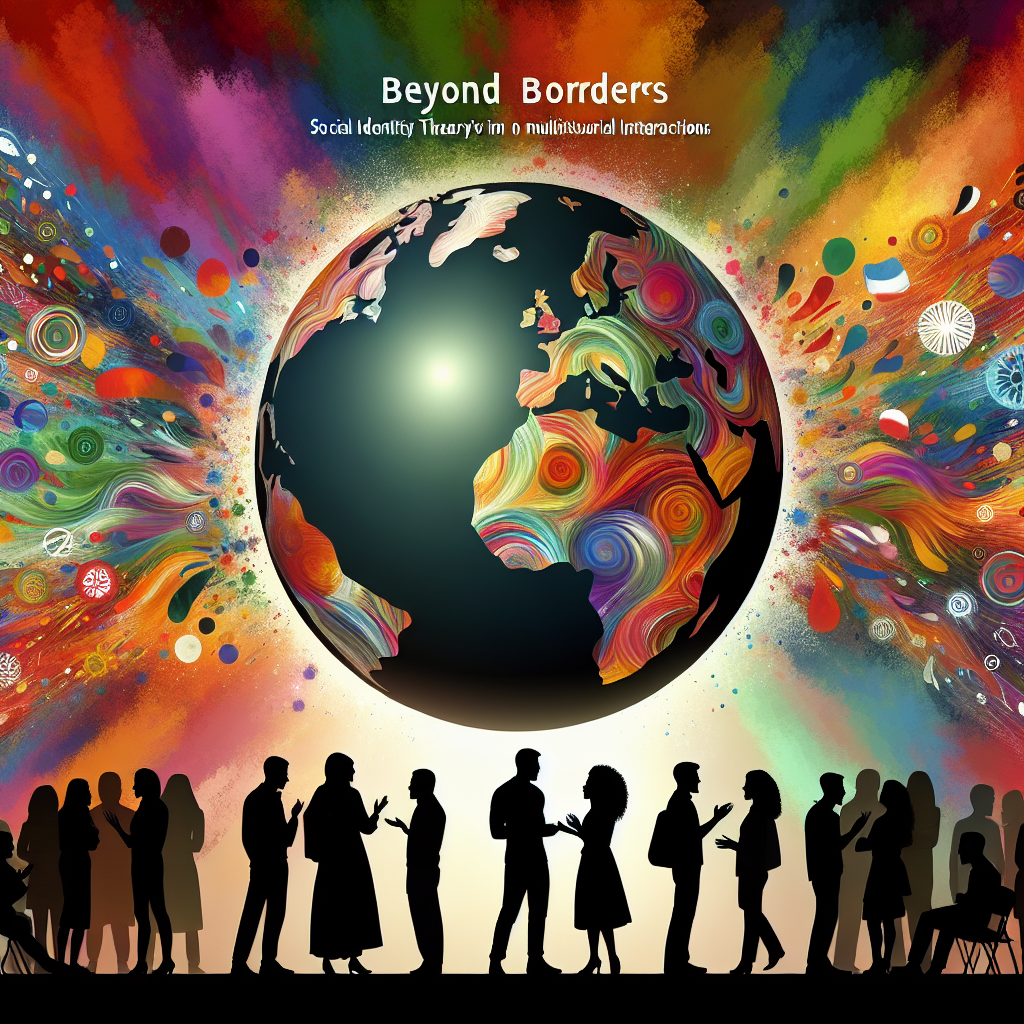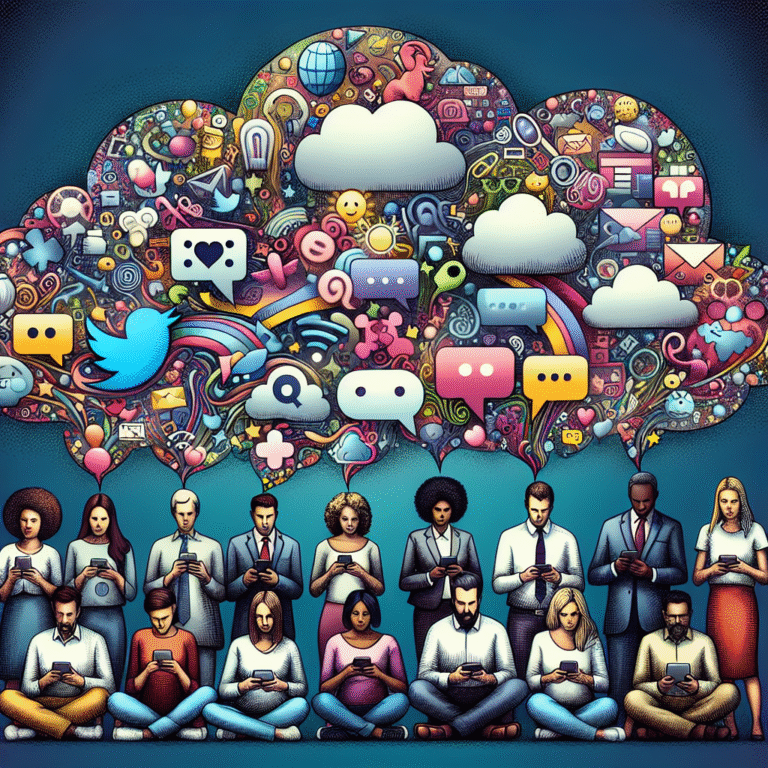
Introduction
In our increasingly globalized world, understanding the dynamics of multicultural interactions is more essential than ever. At the heart of these interactions lies a powerful psychological framework known as Social Identity Theory (SIT). This theory not only sheds light on how individuals perceive themselves and others, but also influences how we engage with different cultures. Understanding Beyond Borders: Social Identity Theory’s Impact on Multicultural Interactions can empower individuals and organizations to foster more inclusive and harmonious environments across diverse societies. Let’s delve deeper into this fascinating topic and see how social identities shape our interactions beyond borders.
Understanding Social Identity Theory
Social Identity Theory, developed by Henri Tajfel in the 1970s, focuses on how group affiliations influence behavior, perception, and interactions. According to the theory, individuals categorize themselves and others into various social groups, leading to an “in-group” versus “out-group” mentality. These group distinctions significantly impact our interactions and attitudes towards others, especially in multicultural settings.
Key Concepts of Social Identity Theory
- Social Categorization: The process of classifying people into groups.
- Social Identification: The individual’s self-concept based on their membership in social groups.
- Social Comparison: Comparing the in-group with out-groups to enhance self-esteem.
The Relevance of Social Identity Theory in Multicultural Contexts
In a world where diverse cultures and identities coexist, the principles of SIT can elucidate why certain cultural interactions flourish while others falter. By understanding the motivations behind group behavior, we can create strategies to bridge cultural divides, enhance communication, and promote solidarity.
The Role of Social Identity in Multicultural Interactions
Our social identities—shaped by ethnicity, nationality, religion, and other factors—play a crucial role in how we perceive and engage with people from different backgrounds. Here we explore the impact of social identity on multicultural interactions through various lenses.
1. In-group Bias and Its Effects on Interactions
In-group bias refers to the tendency to favor members of one’s own group over those from other groups. This bias can manifest in various ways, from workplace favoritism to social exclusion in community settings. Understanding this phenomenon is key to understanding the challenges faced in multicultural interactions.
Case Study: Workplace Diversity Initiatives
A multinational corporation launched diversity training to curb in-group bias. They found that employees initially focused more on their specific departments than on the larger organizational identity. However, over time, collaborative projects that emphasized collective goals led to decreased bias, showcasing how intentional focus on shared identities can improve multicultural interactions.
2. Bridging Cultural Divides Through Shared Identities
Social Identity Theory posits that fostering a shared identity can mitigate tensions between disparate cultural groups. When individuals see themselves as part of a larger, inclusive group, they are more likely to collaborate and empathize across cultural boundaries.
Case Study: Community Cohesion Programs
A community in an ethnically diverse city launched a series of "Cultural Exchange Days." By encouraging residents to share their unique heritages while focusing on common civic pride, they saw a rise in community cohesion and reduced racial tensions. This example exemplifies Beyond Borders: Social Identity Theory’s Impact on Multicultural Interactions by demonstrating the power of unified identities.
3. The Influence of Globalization on Social Identity
As globalization continues to blend cultural lines, individuals are often faced with multiple social identities. This multifaceted identity can enrich multicultural interactions but may also lead to identity conflicts.
Case Study: Immigration and Identity Crisis
Consider the experiences of immigrant families in major urban areas. Many face identity crises while trying to assimilate into a new culture while retaining their cultural heritage. Programs that support bicultural identity development have shown promising outcomes in fostering positive multicultural interactions, highlighting the importance of understanding social identity in today’s evolving world.
Strategies for Enhancing Multicultural Interactions
Through the lens of Social Identity Theory, several strategies can be employed to enhance interactions across cultural boundaries.
1. Establish Common Goals
Creating shared objectives can unite individuals from different backgrounds, fostering teamwork and collaboration. Whether in a workplace setting or community initiatives, a shared mission can transform the “us versus them” mindset into “we are all in this together.”
2. Encourage Open Communication
Promoting dialogue about cultural differences and encouraging open discussions can reduce misunderstandings. Workshops and seminars focused on cross-cultural competency can pave the way for deeper connections.
3. Celebrate Diversity
Organizations and communities should actively celebrate cultural diversity through events, programs, and education. Recognizing and valuing differences fosters appreciation and can turn potential conflicts into opportunities for learning.
The Future of Multicultural Interactions through Social Identity Theory
The ongoing evolution of social identities in a globalized world indicates that we must remain vigilant in our efforts to understand and navigate multicultural interactions. As society becomes more interconnected, insights from Social Identity Theory will undoubtedly play a pivotal role in shaping our collective future.
Embracing Complexity
In recognizing the complexity of individual identities, stakeholders can develop nuanced approaches that celebrate diversity while embracing the commonalities that unite us.
The Role of Education
Educational institutions wield significant influence in shaping perspectives on multicultural interactions. By incorporating teachings on social identity and cultivating empathy, the next generation can foster a more inclusive world.
Conclusion
Understanding Beyond Borders: Social Identity Theory’s Impact on Multicultural Interactions is not merely an academic exercise; it is an essential endeavor for anyone looking to thrive in a global society. The principles of Social Identity Theory provide crucial insights into how we can effectively engage with diverse cultures, breaking down barriers and fostering unity.
By embracing common goals, open communication, and the celebration of diversity, we can create environments that not only respect cultural differences but also leverage them for greater collaboration and innovation.
FAQs
1. What is Social Identity Theory?
Social Identity Theory is a psychological framework that explores how individuals categorize themselves and others into social groups, influencing behavior, perception, and interactions.
2. How does Social Identity Theory apply to multicultural interactions?
It provides insights into the dynamics of group behavior, helping us understand biases, promote inclusivity, and bridge cultural divides.
3. What are some practical applications of Social Identity Theory in workplaces?
Organizations can use SIT to implement diversity training, create shared objectives, and foster an inclusive workplace culture.
4. What strategies can help reduce in-group bias in multicultural settings?
Establishing common goals, encouraging open communication, and celebrating diversity are effective strategies to diminish in-group bias.
5. Why is understanding social identity crucial for the future of multicultural interactions?
As globalization increases cultural interactions, understanding social identity will guide positive engagement and collaboration across diverse groups.
In conclusion, navigating the rich tapestry of multicultural interactions requires a deep understanding of Social Identity Theory. As we move beyond borders, these insights can illuminate pathways to collaboration, understanding, and unity, ultimately making our world a more harmonious place.

















